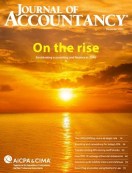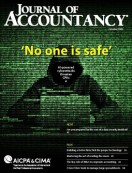- newsletter
- Extra Credit

Best practices for working with your TAs
Both sides benefit when the relationship works well.
Please note: This item is from our archives and was published in 2019. It is provided for historical reference. The content may be out of date and links may no longer function.
Related
How top innovators teach technology
How to identify and prevent contract cheating
TOPICS
It’s a new year, and you’re getting started with a fresh group of teaching assistants (TAs). Can you depend on them to make life a little easier, helping you in grading papers, proctoring exams, and helping with research, among other tasks? You can, if you follow these steps for working with TAs.
Identify good candidates. TAs are often assigned to faculty members. However, if you have the opportunity to choose your own, one great place to look may be in your own classes.
“I try to identify high performers among my undergraduate students and talk to them about becoming my teaching assistant,” said Aretha Hill, CPA, Ph.D., associate professor of accounting at the Florida Agricultural and Mechanical University in Tallahassee, FL. Former students work well because they will be familiar with your teaching and grading style, Hill said. She also asks graduating TAs — who are familiar with her expectations — to recommend other students who are still working toward their degrees.
As part of the process, consider a prospective TA’s schedule, Hill said. Since she requires her TAs to attend the classes they are assisting with, Hill checks for conflicts before finalizing her choices.
Be clear about what you want — especially where grading is concerned. “It’s very important to set expectations for your TAs when you start working with them, and to develop an open, collegial relationship,” said Greg Jenkins, CPA, Ph.D., professor of accountancy at Auburn University in Auburn, Ala. He does that by discussing his guidelines at the beginning of the year. When Jenkins asks them to grade exams, for example, he gives his TAs a grading rubric and the solutions for questions. For a more detailed assignment, such as a case, he gives them the scale of points they should use, discussing when a student would receive full credit and when points would be deducted.
His goal is to ensure that the judgment they have to exercise is limited. “It’s much easier to build quality into the process and make course corrections early rather than later on.”
Jenkins recommends starting slowly to be sure the TA has got it right. For instance, he may ask a TA to grade a single student’s work, then “review it with them to see if they’re applying the grading guidelines consistently.”
TAs may need further guidance if exams or assignments go beyond multiple-choice questions. “When an assignment is open ended or subjective,” Hill said, “I go over it with the TA first to discuss what I’m looking for.”
Keep communications open. In addition to grading, professors may also ask their TAs to get involved in research projects, and in that case in particular, regular contact throughout the semester can help ensure TAs remain on course. Mark C. Dawkins, CPA, CGMA, Ph.D., professor of accounting at the University of North Florida in Jacksonville, meets with TAs at least weekly and as often as two to three times per week.
“If they are collecting or cleaning data, I don’t want them to do too much without being sure we are on the same page,” he explained. “They could end up redoing two weeks’ worth of work because they weren’t clear on what I wanted.”
Dawkins also encourages TAs to call or email him with questions. “I want them to clear up any problems so they can move forward,” he said.
The frequency of contact can also depend on where the faculty member and the TA are in their relationship. “Early on, you’re just learning how each other works, so more frequent conversations are important,” Jenkins said. “As TAs gain experience, they often become much more confident and can function well independently without as much monitoring.”
Speak up if there’s a problem. It’s also important to reach out to TAs who are not meeting expectations to find out what’s going on, Jenkins said. He finds that students appreciate it when you do, and it can help address any issues.
In addition, he advises being mindful of the TA’s course load, projects, and exams. “If you give TAs an assignment and don’t set a deadline, they may think they have to grade it immediately,” he said. “But if you tell them exactly when you need” something, they can better manage their own time.
When all goes well, your relationship with your TAs can benefit both of you. The TA gains a valuable learning experience and the professor, by following these steps, builds a partnership that makes it easier to use his or her time effectively. “Approach your work with the TA as a partnership,” Dawkins advised. “Hopefully, we both gain from the experience.”
Anita Dennis is a New Jersey-based freelance writer. To comment on this story, email senior editor Courtney Vien.



















